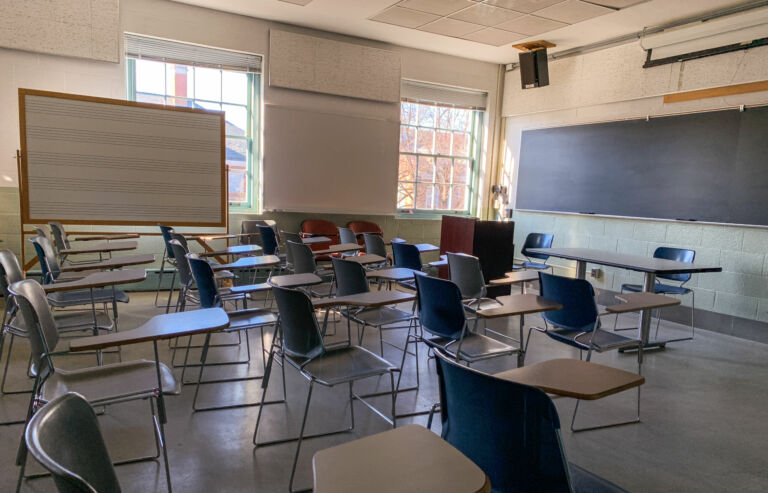After promising to select one of three school reopening plans on July 1, Gov. Cooper announced that he would get around to making a decision sometime in the next few weeks. Cooper’s apparent indecisiveness reminded me of a kid standing at the Chuck E. Cheese prize counter, trying to decide whether to use his tickets on a pencil eraser or a pack of Smarties.
Plans A, B, and C
Three weeks ago, the N.C. Department of Health and Human Services (DHHS) published an interim guidance document, StrongSchoolsNC Public Health Toolkit (K-12), and asked schools to prepare for one of three back-to-school scenarios. Plan A called for minimal social distancing, Plan B required moderate social distancing, and Plan C would mandate that all public schools provide remote learning only.
Gov. Cooper told North Carolinians that they would announce their selection of one of these back-to-school options on July 1. The evening before the announcement, Cooper’s press office announced that he would delay his much-anticipated decision. It is still not clear why. As I remarked to my Carolina Journal colleague Lindsay Marchello yesterday, I suspect that the Cooper administration believed that a consensus choice would emerge by July 1, one that would make everyone happy. When it didn’t, his advisors panicked and opted to dodge, duck, dip, dive, and dodge.
Plan a2 + b2 = c2
From the beginning, the Cooper administration has refused to describe the metrics that will be used to make the call. According to N.C. Department of Health and Human Services officials, “there’s no one set number being used.” So, we’ll never know which “numbers” triggered the delay, just as we don’t know which “numbers” inform Cooper’s decision to prohibit gyms and bars from reopening.
When pressed by reporters to identify specific trends or factors that lead to the delay, Cooper spoke of the need to get buy-in “across the board” before he makes a decision, a startling departure from the vague “data ‘n science” justifications used in the past. That’s not to say “data ‘n science” didn’t get a mention at the press conference. Cooper declared that his administration is evaluating new scientific studies. (Presumably, these are studies that appear in publications such as the New England Journal of Medicine rather than the American Journal of Political Science.) Predictably, none of the reporters selected to ask a question requested that the Cooper administration furnish an annotated bibliography of the studies and their relative positions in the administration’s decision tree.
Many expected Gov. Cooper to select Plan B, the most stringent and costly of the three options. The Cooper administration appears to be committed to in-person instruction in the fall, but clearly, Cooper is not comfortable selecting the more lenient Plan A. Many public school employees appear to favor full-time remote learning under Plan C. They recognize the difficulty of implementing Plan A or Plan B and understandably fear that returning to in-person instruction will jeopardize for their own health and safety.
Yet, Plan C comes with challenges of its own. Parents who do not have the flexibility to work from home, such as those who work in the service industry, run a small business, or work shifts, would have tough choices to make. Plan C does the most harm to low- and middle-income households that have fewer child care and supervision options and often limited access to broadband and internet-accessible devices. These parents cannot afford to stay home to supervise remote learning.
Plan D(itch)
Yet, the delay may push more families to pursue what I call Plan D: ditch the public school drama and dispatch their children to a non-public school. Indeed, those who can afford to stay home may simply choose to homeschool in response to the many “unknowns” of the new school year. Yesterday, the N.C. Division of Non-Public Education (DNPE) published annual homeschooling statistics, which affirmed the popularity of home education in pre-COVID North Carolina. An estimated 149,173 children attended homeschools last year, a 5% increase from the year before. Yet, North Carolina may easily eclipse that number next year. Yesterday, so many parents tried to file a notice of intent to homeschool that they broke the DNPE website.
Another option for parents is to enroll their children in a private school that has implemented a strict sanitation regiment, social distancing practices, and other coronavirus mitigation measures. DNPE reported that private school enrollment rose to 103,959 last year, a 1.5% increase from the year before. It may be difficult for private schools to exceed that figure next year. As government dictates force businesses to close or limit operations, household incomes will drop. Without additional assistance, middle-class parents may no longer have the modest resources needed to send their children to small, faith-based private schools that complement the needs of the child and the values of the family.
Plan E(mbitter)
Delaying the announcement just weeks before the beginning of the school year has been Cooper’s biggest blunder and puts public school educators in a terrible bind. Year-round schools start this month, and the traditional calendar school year begins in around six weeks. According to Education Week, North Carolina is one of only five states to establish a statewide start date, and no state starts the school year earlier than North Carolina. Elected officials in most states have allowed school districts to determine how and when to reopen, a wise approach championed by the Republican candidate for state education superintendent Catherine Truitt, Lt. Gov. Dan Forest, and others.
While the N.C. Association of Educators may be in his corner, teachers are anxious, angry, and feel betrayed. Surely, hundreds of thousands of families feel the same way.


